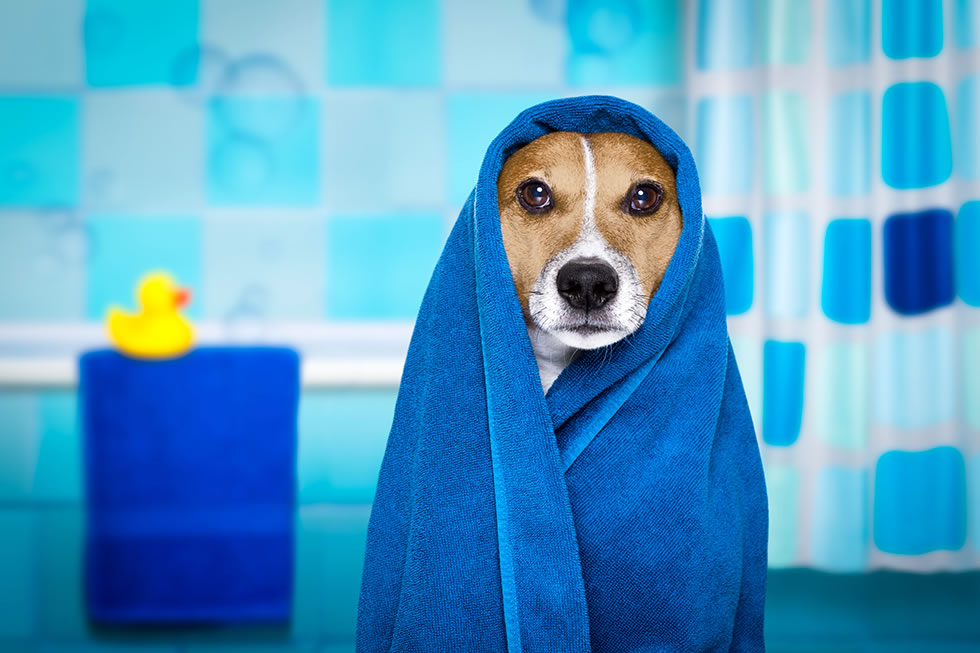
We love our pets, and we spend willingly on all sorts of stuff that makes them—and their owners—happy. The number of pets at home in the U.S. is increasing. The American Pet Products Association’s 2021-2022 National Pet Owners Survey revealed that 70 percent of U.S. households own a pet, which translates to about 86 million families nationwide. As a result, architectural components and amenities for pets are being incorporated into houses, condos, apartments and shared public spaces of many multifamily dwellings. Dogs are the most popular species, followed by cats, then fish, birds, reptiles, small animals and horses.
How much do we spend on them?
The APPA reported that $103.6 billion was expended on pet purchases in 2020, up from $97.1 billion the year before. All those balls, chew toys, leashes, galoshes and more have made builders, developers, architects and design pros cognizant of the opportunity to offer home owners some of the same features for their pets that they request for themselves when building or remodeling, primarily pet showers of all sizes and cabinetry to store bowls, toys, leashes and other paraphernalia.
Millennial influence
Pet watchers expect the pet-amenity trend to continue to increase, in large part because millennials who are beginning to buy homes love their pets perhaps more than other cohorts including their boomer parents.
Developers cater to pet owners
Developers now include scratching posts and tunnels in homes and apartments for cats, and on-site pet parks, runs, spas and doggie daycare centers in multifamily dwellings. Developer Related Companies out of New York City has been a leader and several of its buildings have a professionally-staffed Dog City pet spa with dog walkers and grooming experts who also will arrange play dates or feed dogs. One of its buildings MiMa has a bone-shaped pool for pets.
Custom builders include pet features
Because about 95 percent of his clients now own a pet, builder Chad Collins, founder of Collins Design-Build in Raleigh-Durham, N.C., automatically asks when they begin to work together whether they own pets, how many they have, the pet’s size and what particular features they want included for their pets. The most popular request, he says, is a pet shower, which he usually constructs in a 3-foot-deep-by-5-foot length, either level to the floor for larger animals or several feet higher for smaller animals, so homeowners don’t have to bend to bathe them. With tiling all around the shower, a wand faucet and fiberglass or cultured marble floor, the typical design costs about $1,200 in new construction but more—about $4,500–when retrofits must be made when remodeling. Collins also discourages pet owners about using carpet since it may not always be easy to clean to remove odors.
Feeding stations have become a popular
Mark Haddad, owner of Interiology Design Company in Watertown, Mass., outside Boston says, "We often add feeding stations during kitchen renovations, so owners don’t have bowls underfoot that might spill water. Besides having cabinetry for bowls, we also have storage for treats and leashes," he says. If these features are part of cabinetry, they may run between $750 and $1,000, but some owners set up an entire area just for their pet, which may go up to $2,000 or $2,500. "It depends on size and how elaborate," he says. And one client recently requested that such features be incorporated into their kitchen, though they don’t yet own pets. "They hope to, so they’re planning ahead," he says.
Pet solutions trending now
What’s trending and frequently visible in glossy shelter magazines and on websites such as Pinterest? Items like "dog showers" and "dog feeding stations". Our research revealed a variety of home solutions for pets. Here are a few products and features to consider for your pets:
- Built-in food and water bowls for eating stations in kitchens and mud rooms to keep such items off the floor seem among the most prevalent and affordable. MasterBrand Cabinets manufactures a variety of outfitted cabinets—one with a toe kick that makes access available with a tap of the foot. And the reason is that the company learned in a survey that 21 percent of pet-owning home owners find the most challenging items to store are pet supplies.
- Cubbies for other pet items like toys and leashes.
- Oversized showers with long faucets or wands to bathe larger dogs and cats more easily than in small potting sinks, outdoors or in main people bathrooms.
- Washable upholstery for pets allowed on sofas and chairs or who jump up anyway.
- Scratch-resistant floors such as stones, tiles and faux woods.
- Large expanses of glazing in windows and doors for pets to look out to watch animals on "their" property.
- Doors that dogs can pass through on their own to the outdoors rather than wait for an owner to let them out or back in, often with the use of an electronic collar.
- TVs mounted at the right height–lower, so Rover can watch and listen to favorite TV shows when home alone or radios left on for music or noise also to keep them company.
- Pocket doors or low walls that block pets from entering certain rooms that you consider off-limits.
- Artificial green turf so they don’t ruin real grass when they play outdoors but which looks real.
